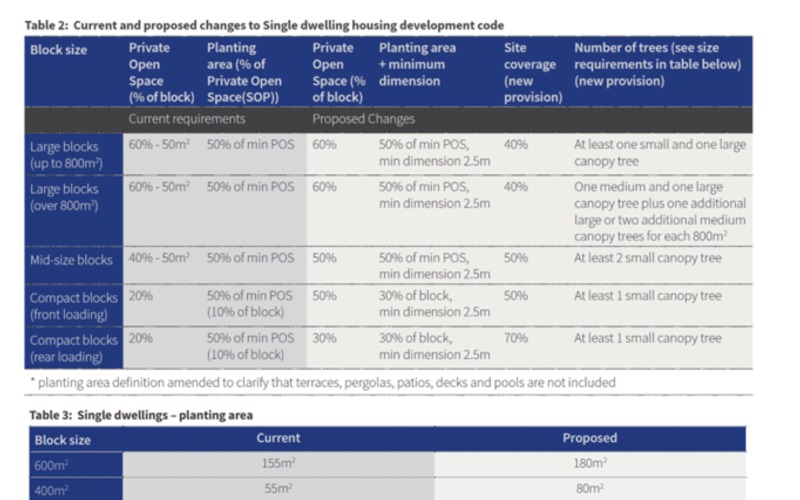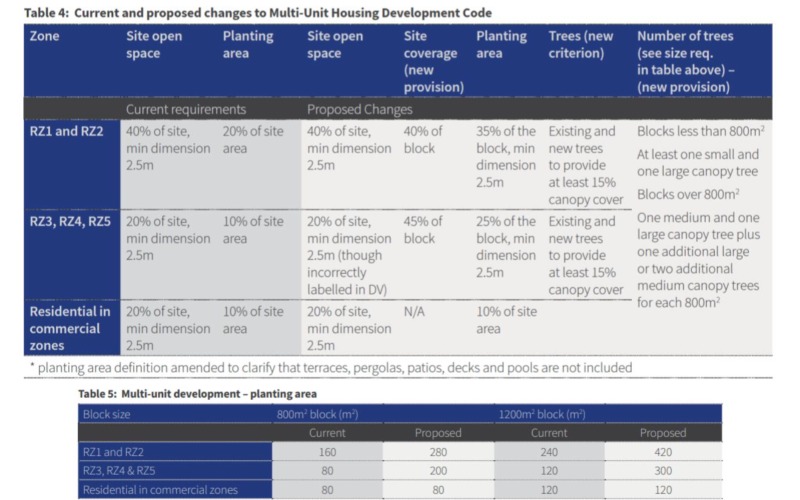Draft variation to the Territory Plan 369

With warnings of unliveable living conditions affecting the most vulnerable people in society thanks to effects of global warming and the urban heat island affect.
There is increased emphasis on creating more climate friendly cities are around the world. In Australia, some cities and local councils are aiming to sometimes double canopy coverage, but responsibly varies between the public realm and private land.
By comparison Canberra has a target of achieving 30% tree canopy cover (or equivalent) and 30% permeable surfaces by 2045 in the urban footprint.
DV369 Living Infrastructure expands on Canberra’s Living Infrastructure Plan and sets tangible targets for soft landscaping for private developers on residential land (RZ1- RZ5), with the aim of improving liveability and environmental performance (natural ventilation between buildings and other outcomes). The key changes to the Territory Plan because of DV369 are:
- Introduce a site coverage requirement
- Updated definitions of site coverage, planting area, canopy tree & deep soil zone
- Increase the planting area required
- Introduce a requirement for tree planting
Specific changes to the Single Dwelling Housing Code and Multi Unit Housing Code are contained below:


DV369 in its current form has the potential to impact on limiting housing typologies, yield, and housing affordability and in particular compact and mid-size blocks. Additionally, unlike other jurisdictions, because DV369 applies only to private blocks in residential areas and does not apply to the public realm. Developers may decide to reduce soft landscaping in the public realm when developing Estate Develop Plans. This could have the effect of reducing placemaking and providing attractive vistas in Estate Development Plans with the emphasis for soft landscaping in the private realm.
DV369 has recently been delayed and is expected to come into force end of June 2022 and does not have an interim effect.
